In Veneto, art, crafts, architecture, history and wine merge into a single entity. Whether it’s the world-famous Murano glass, remarkable goldsmithing or the masterful Prosecco, Veneto is often home to the masters of their craft.
Veneto has always been important for trade. The city of Venice in particular played a prominent role in this. Influences from the east and the north were thus combined with the culture of the Holy Roman Empire in Veneto.
Venice – The city on the water
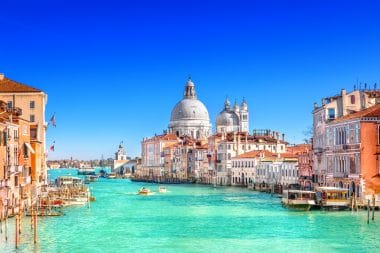
Venice is the capital of Veneto. In the Middle Ages, it was one of the richest cities in the world. Today, it is still a popular destination for travelers. 30 million visitors a year enjoy the city. Whether it’s a gondola ride or a visit to St. Mark’s Basilica, everyone gets their money’s worth in Venice. Events such as the Venetian Carnival or the Biennale also attract numerous visitors to the city every year.
Even in much earlier times, Venice was a source of inspiration for artists such as Goethe, Claude Monet or Hemingway and also home to famous people in world history. Particularly well-known among these: Marco Polo.
Verona – City of Love
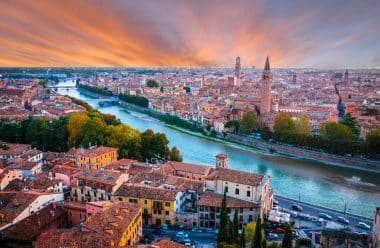
The city of Verona is located at the western end of Veneto. Its 2000-year-old old town, which combines different eras of architecture, is a UNESCO World Heritage Site.
The Roman amphitheatre in particular, where elaborate opera performances take place today, is a crowd puller. It is also the city’s landmark and the third largest arena in Italy.
Shakespeare’s most famous play also takes place against the backdrop of this city. This helped the city to create another attraction: the Juliet Balcony, which is reminiscent of the scene in which the lovers profess their love for the first time.
Padua – The City of St. Anthony
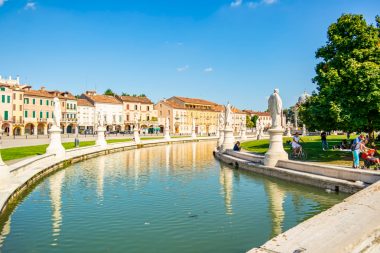
In Padua, too, the historic city center with its magnificent squares, stately palazzi and winding alleys is still preserved.
The Basilica di Sant’Antonio is one of the most famous sanctuaries in Italy and houses the bones of St. Anthony of Padua.
The city also has a lot to offer in terms of art history. There are Fesques by Giotto in the Scrovegni Chapel and by Titian in the chapter house of the Scuola di Sant’Antonio. Numerous literary works also have their central setting in Padua.
Vicenza – The City of Villas
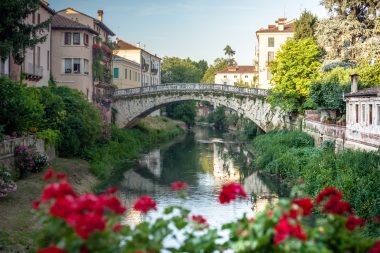
From the period from the 15th to the 18th century, some palazzi have been preserved in Vicenza. However, the city is particularly known for its Palladian villas, which, together with the old town, have been part of the UNESCO World Heritage Site for years.
Visible from afar is the Torre di Piazza, a tower almost 80 m high on the edge of the city’s main square from the 12th century.
Belluno – Quiet town in the Alps
Belluno is located in the northern part of Veneto. The Alpine city was originally founded by the Celts and the Venetians. Fittingly, its name also goes back to a Celtic expression that means something like “light hill”.
In comparison, the city is rather tranquil, but in addition to its cultural offerings with its beautiful surroundings, it also invites you to numerous sporting activities for the family.
Attractions in Veneto
St. Mark’s Basilica in Venice
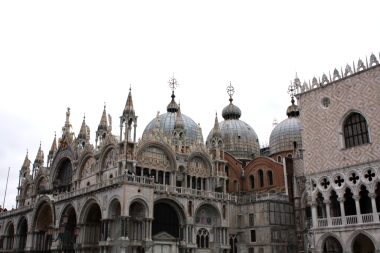
The Basilica di San Marco, built in the Byzantine style, is the richest church in the city. Not only is it richly designed and built in large dimensions, but it also houses valuable treasures inside. The mosaic floor, an altarpiece made of gold and precious stones, as well as the icons in the choir area are just a few of them.
Casa di Giulietta in Verona
The stately house from the Gothic period is a magnet for those interested in culture and literature as well as for lovers.
And this is not because of the impressive building or the exciting story, but because of Shakespeare’s “Romeo and Juliet”. Even if this historical authenticity has not been proven, a Montague family actually lived in the palazzo. However, the building was not only mentioned by Shakespeare, but also by Dante and Charles Dickens. Over the centuries, the exterior of the building has changed greatly and has been extensively renovated. The interior of the building has been converted into a museum that gives an insight into life in the Middle Ages, and in the associated “Club Julia” letters addressed to Julia are answered.
The Arena of Verona
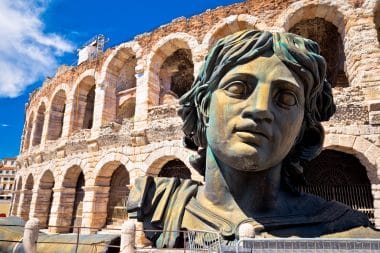
Under Roman rule, bloody battles took place in the huge arena in front of 30,000 spectators. It was also used for various events in the Middle Ages and even in the 17th century equestrian tournaments were held there. Only an earthquake put an end to this.
Thanks to excellent restoration work and exceptionally good acoustics, it is now used for concert events and the annual opera festival.
Botanical Garden in Padua
The Padua Botanical Garden is the oldest botanical garden in the world. In 1554, the construction of the original garden was completed. On an area of 22,000 m², it is home to over 6000 plant species. The historical structure is also remarkable. One of the special plants in the garden is the “Goethe palm”, which was studied by the poet and naturalist and mentioned in his notes.
Die La Rotonda in Vicenza
Designed by the eminent architect Andrea Palladio, who took Roman architecture as his guiding principle, it is now a UNESCO World Heritage Site. It is located on the south-eastern outskirts of Vicenza and was once a place for relaxation and distraction. Today it is a museum and open to the public.


